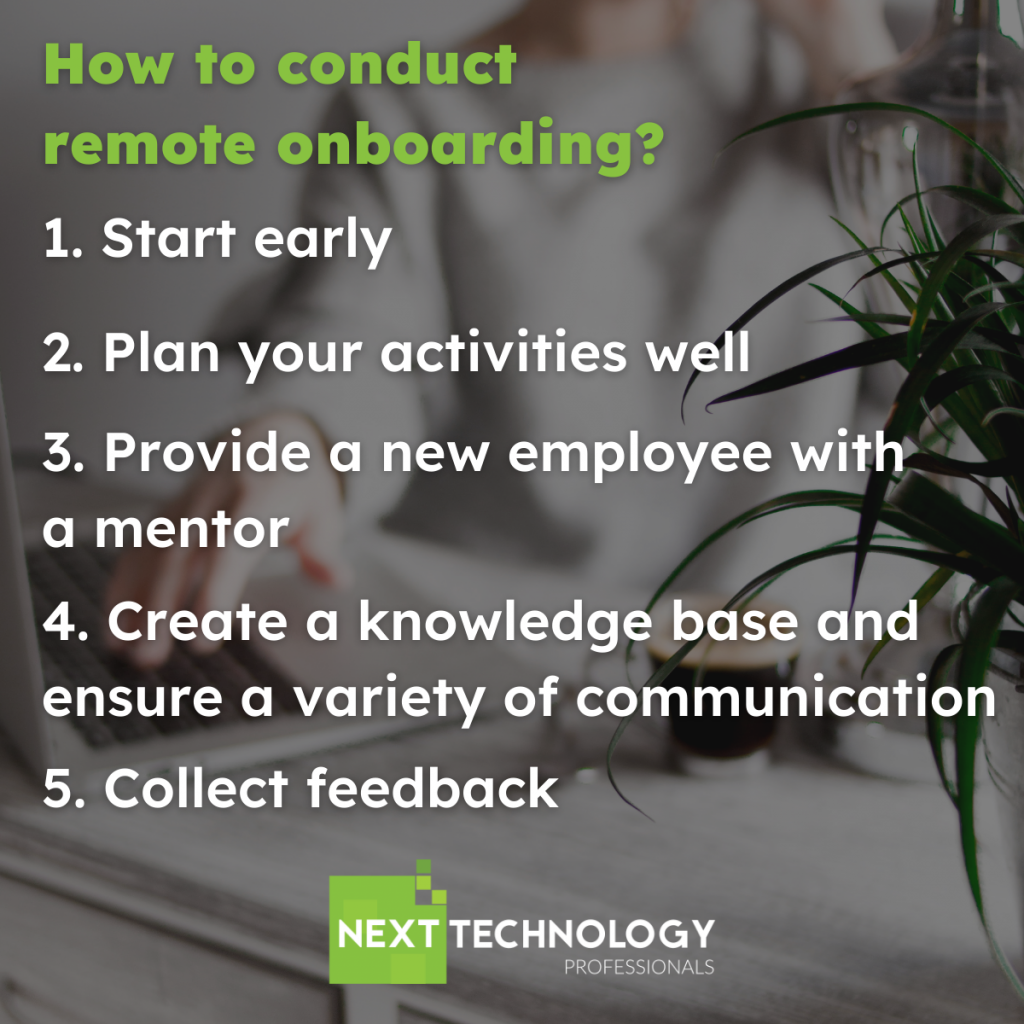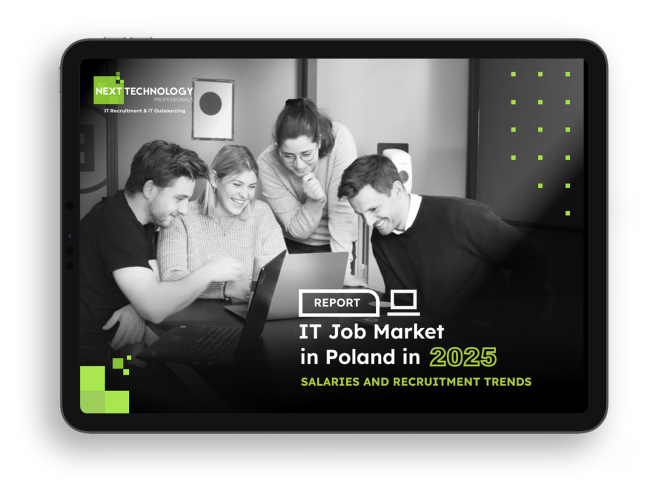For many employees, the first days in a new job are a stressful experience. Suddenly, they find themselves in a new environment, organizational culture and team, and the requirements and tasks they face raise many questions and doubts. The way employees are introduced to the newly assumed role influences their sense of belonging, job satisfaction and efficiency, and even the period of time they remain employed in the company.
In this article you will find:
- why it is worth taking care of online onboarding
- how to conduct a remote onboarding program for new employees
- what to pay special attention to when planning it
The benefits of remote onboarding
According to the data presented in the report “The True Cost of a Bad Hire”, the proper introduction of a new employee to the company increases their productivity by 70% and improves the retention rate in the company by 82%. Onboarding is particularly important in industries most exposed to employee rotation, which at the same time have serious problems with recruiting new candidates. As the report from LinkedIn shows, the technology and software industries (rotation rate at 13.2%), as well as trade and consumer products (13%) dominate here.
In the era of a pandemic, more than half of employers decided to use the remote implementation process of new hires. This process is positively recognised by new employees. According to the “Candidate Experience in Poland 2021” report, 75% of specialists positively perceive online onboarding activities. And 31% even think that the remote process of introducing a new employee to the company’s activities is better than one that is 100% in place.
How to conduct remote onboarding?
Efficient implementation of a new employee is always a challenge, regardless of its form. Remote management of employee processes comes with additional pitfalls. Therefore, when creating online onboarding, we must carefully plan our activities. So as not to make mistakes and not discourage a new employee in the first days of work.

Here are 5 tips on how to do it.
1. Start early
Based on the “Candidate Experience in Poland 2021” report, 37% of surveyed employers declare that they undertake onboarding activities before the first day of work of a new employee. It’s a good idea to start introducing a new person to the company as soon as possible. Especially in the event of a long break between the candidate’s successful completion of the recruitment process and taking up employment.
We should not send confidential documents to the selected candidate during this time. We can start by providing a platform where they can learn about the company’s values and key information, e.g. in the form of videos with employees and initial training sessions.
If we do not have an onboarding platform, we can choose a different form of communication with the candidate, e.g. by periodically sending them e-mails with welcome videos and instructions. However, remember not to overdo the number of e-mails and attachments.
When introducing a new employee to remote work, first of all, we should provide them with the necessary tools. Any delay related to the shipment and installation of the equipment needed to perform the duties in a given position negatively affects the effectiveness of the new person’s work.
Together with the work equipment, we can send the employee a few company gifts. Thanks to this, we will make a positive first impression and affect their sense of belonging to the company. And if we want to give the candidate something special, we can adjust the gifts to their interests, if it was mentioned in their CV or during a job interview.
2. Plan your activities well
The full effectiveness of an employee usually occurs after approx. 6-9 months from the start of the employment. That is why it is so important that the plan of the onboarding process goes beyond the first weeks in a new job and defines all the key steps leading to the full implementation of the employee in the company’s life.
A well-defined plan will give the new employee a sense of peace and show that the employer is paying his attention. In turn, the person responsible for the implementation will allow for the precise organization of the necessary stages of the process without the risk of overloading the new employee with excessive information.
When creating such a process from the beginning, it is worth using a consistent template that will be adapted to the requirements of individual workplaces. We can start with a checklist of tasks to be performed by individual people. The areas that we cannot neglect during onboarding are:
- completing the procedures – sending the newly hired person the regulations and taking care of administrative and organizational issues, such as personnel matters, signing documents, providing access/passwords
- defining tasks and goals – explaining the employee’s duties and the method of verifying the effects of their work
- introducing the principles and culture applicable in the company – such as the organizational structure, principles of cooperation, as well as the vision, mission and organizational culture
- taking care of relationships – presenting the rules of internal communication, as well as introducing the new person to the other employees
3. Provide a new employee with a mentor
It is natural for a new employee to have many questions and concerns. While in onsite work, they can ask someone who happens to be nearby, remote work does not provide such an opportunity. Regardless of the type of work, the employee will feel more comfortable if from the beginning he is assigned a person whose task is to help him acclimatize.
A good practice is to dedicate a mentor (the so-called “buddy”), whose task will be to provide the new person with all the necessary materials and data to answer current questions. Buddy should also make every effort to ensure that the new employee learns about the customs of the organization.
Buddy can be an experienced specialist from a team that a new person joins. It is important that the role of the mentor is assigned only to those, who are voluntarily committed to the implementation process of a new colleague.
The mentor or supervisor should also ensure that the new employee is properly acquainted with the team. Meetings should be informal. In order to better engage employees in online integration, you can use gamification elements here.
4. Create a knowledge base and ensure a variety of communication
In order for the adaptation of a new person to go according to the plan, we should create a remote knowledge base in which they will find all the necessary information (guides, tools used by the team, document templates, regulations and information about products or services provided). By sharing materials online, we can easily assign them to specific users and grant them appropriate permissions.
It’s easy to inadvertently overwhelm or bore a new employee in remote onboarding. Remember that training does not have to take the form of dull documents. We can use various tools and methods of interaction, such as webinars, video conferences, podcasts, infographics, team games, as well as quizzes and tests.
5. Collect feedback
As in any good plan, we must not forget to verify the effects. A new employee’s experiences change over time. Therefore, we should establish a few moments in which we will ask him for feedback on the implementation process to the company. We can conduct short surveys with the employee, e.g. every two weeks.
The collected results will enable quick reactions to the problems that occur and will help us improve the entire process in the future.
Additionally, take care of Employer Branding
During onboarding, it is worth encouraging the employee to share positive impressions related to taking up a new job in the company on social media. This is a common practice, especially on business portals such as LinkedIn or GoldenLine. For example, we can provide an employee with a guide on job change communication and help in creating a personal brand on social media. At the same time, we encourage new hires to share the company’s hashtag and posts published by other employees. Thanks to this, we will additionally take care of the positive image of the company as an employer.
Do you care about high-quality recruitment process? We’re here to help you find the best IT specialists on the market. Contact us to take advantage of our support 🙂




